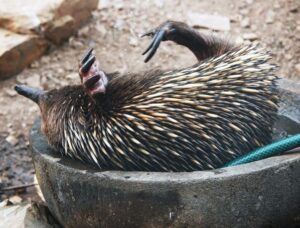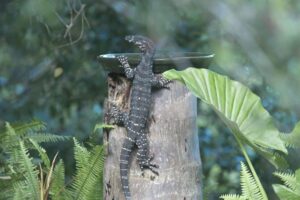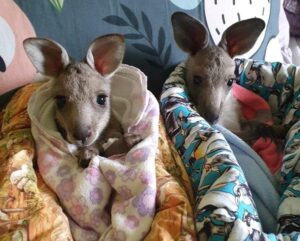Australia is home to four native species of flying-foxes (grey-headed, black, little red and spectacled), all of which play vital roles in pollination and seed dispersal. Sadly, flying-fox populations are in rapid decline, with some species now listed as vulnerable or endangered. These magnificent creaturesare increasingly under threat due to climate change, habitat...
Summer’s here, and New South Wales and Victoria are experiencing some of the harshest weather ever recorded for December. With extreme temperatures and conditions on the rise, it looks set to be a challenging year for people and wildlife alike. Luckily, there are plenty of ways you can help struggling native animals and their habitats stay safe from the heat.

In your backyard
Many native species rely on plants for food, but food shortages often come with tough summer conditions as flowering and fruiting seasons are interrupted. On your property, garden or balcony consider planting with wildlife in mind – choosing good food and shelter species, planting a variety of shrubs and trees and creating links to larger areas of habitat are all ideal for creating wildlife-friendly spaces! Click here for more information on what you can plant.
Piles of leaves, branches or logs can provide shelter and help create cooler areas for smaller creatures such as reptiles, amphibians and insects. However, be careful that you aren’t disturbing any existing habitats or creating a more intense fuel source for a bushfire when constructing these shelters. For reptiles, rocks or shaded, moist spots can be important places for them to cool down and maintain hydration.
Water in extreme heat
Leaving water dishes out can also be a great way to help wildlife cool down – just make sure the dishes are shallow, and the water is refilled regularly. Place water in the shade, either high up or near plants to keep wildlife safe from predators. You’d be amazed at what species will come to visit – and not all of them birds!
If you live in an urban area, such as the city, you can fill shallow containers and place them on doorsteps or balconies for local birds and other animals. Encourage local businesses to do the same, especially if they are situated near a park or green area.
Pets
Keeping pets indoors is also important during summer, when wildlife is more likely to visit your garden for some shade or a drink. Your pets will appreciate being out of the heat and your native visitors can be left in peace.

Think local
Each region will have different challenges in the hotter months, and it’s a great idea to contact your local wildlife rescuers and carers to find out how you can best help. You might be able to make fruit kebabs for food-deprived flying-foxes or craft pouches for orphaned joeys, and for an even more hands-on approach you could also volunteer at your local wildlife shelter or rural fire service.
During the holiday season there’s often an influx of road strikes, so keep an eye out for any injured animals or pouch young on the roads. You may also see animals suffering from heat stress, characterised by loss of balance, unusual behaviour, confusion or panting. Prepare an emergency kit for rescues – a cardboard box, blanket and some water is all you need, and a list of contacts for local wildlife rescue groups will come in handy too.
Flying-foxes are adversely affected by extreme heat events in Australia. In 2018, the country reportedly lost a third of its spectacled flying-fox population in two days. If you find a flying-fox in need of help, do not touch it and instead call a local rescue group – this will help protect the animal and yourself.

The Bigger Picture
With heatwaves and fires predicted this summer, a national approach is needed to restore habitats and protect wildlife. Although it may seem like an overwhelming issue, there are some easy ways you can help.
Donate or volunteer for wildlife rescue groups – these groups can support whole networks of wildlife carers! Humane Society International Australia’s wildlife emergency response fund sends critical support to these groups in emergency situations like floods, fires and droughts. This year we have supported the construction of a disaster ready flying fox atrium due to the severe increase of grey-headed flying-foxes going into care near the Victorian and New South Wales Border. We also funded an easily transportable incubator for birds in Far North Queensland, to be rotated between carers depending on need and location of extreme weather – Donate here.
If you own land, consider joining a conservation program like the Wildlife Land Trust – not only will this help to preserve habitat, but you’ll have access to conservation grants and expert advice for habitat restoration projects. Establishing exclusion fences, regenerating bushland and restoring riverbanks can be vital for local wildlife, and help to create refuges from heat and fires.
And finally, share your ideas with everyone else – encourage your neighbours to protect habitat on their properties, talk to your family about fire safety strategies and teach your friends how to assist injured wildlife. We may not be able to prevent challenging conditions this summer, but we can all do our part to support our native species through it.


